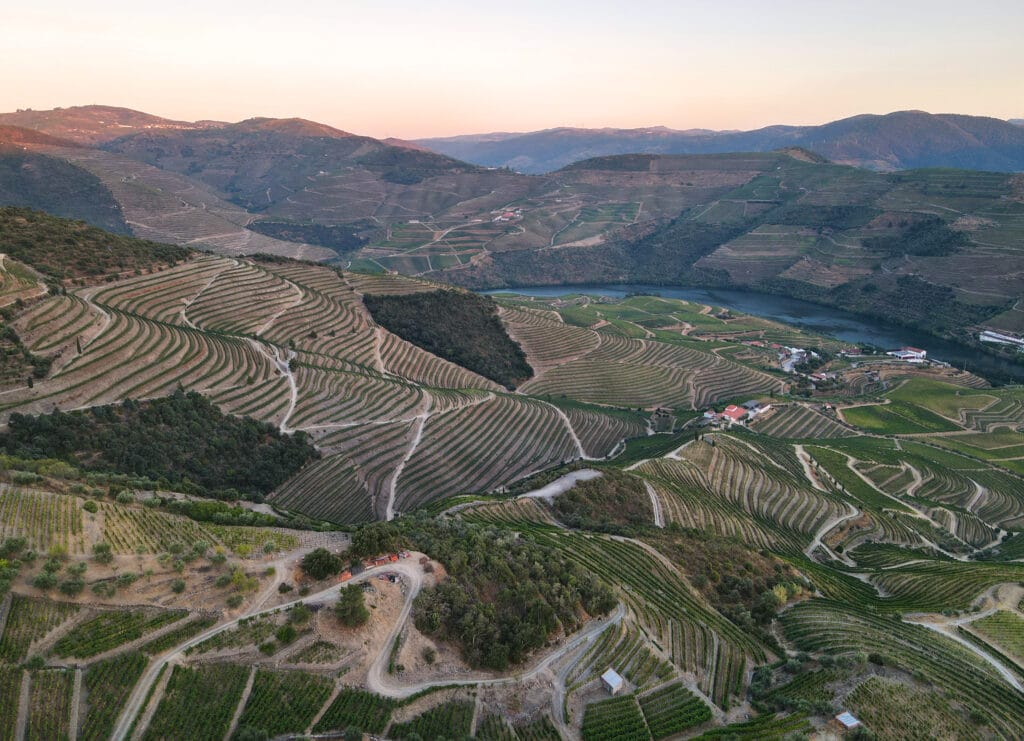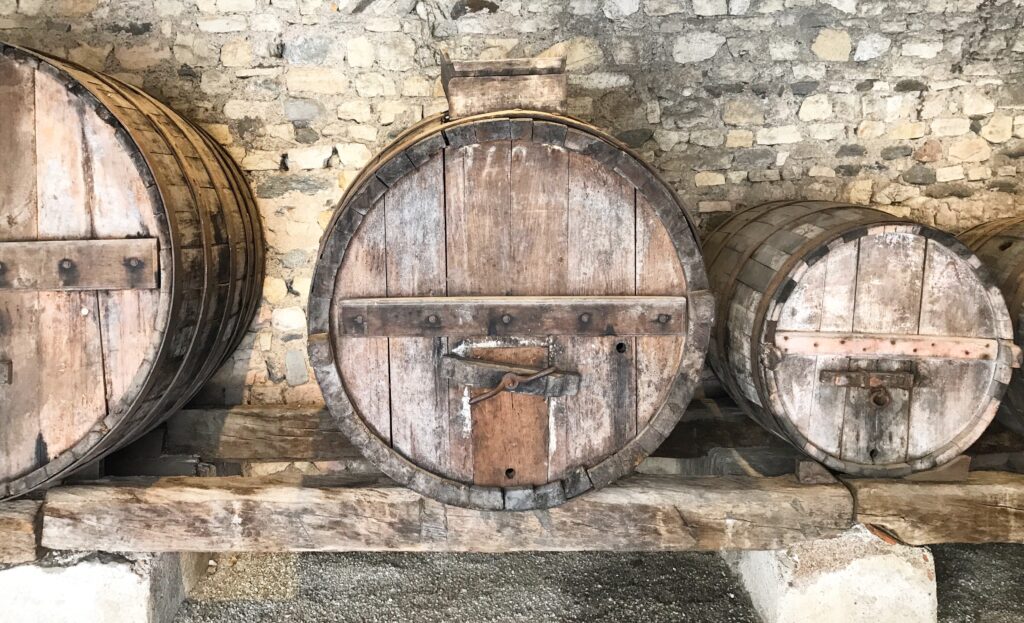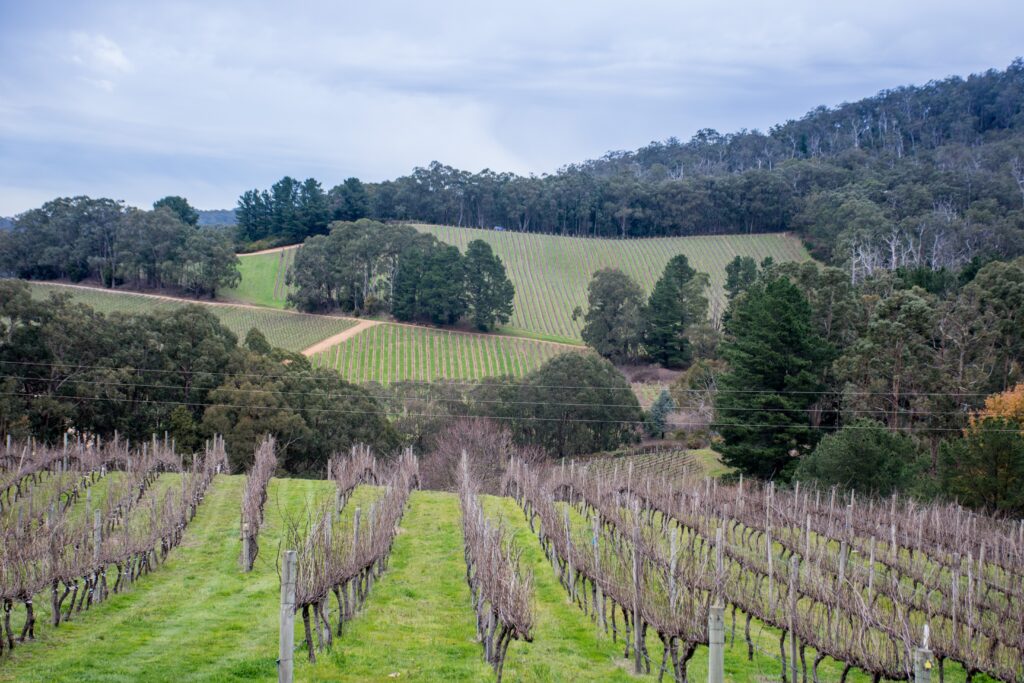The world of wine is at your fingertips. Here at the Wine School, many of our sommelier programs are founded on the idea the core of wine knowledge is understanding wine regions. Welcome to our are article on the best wine regions in the world.

French Wine
Wine is produced throughout France in quantities between 50 and 60 million hectolitres per year. That is an estimated eight billion bottles of wine!

Greatest or Second Greatest?
For many wine lovers, France is the world’s greatest wine country. However, it’s now in second place in two key categories. First, it has the world’s second-largest total vineyard area, second to Spain. Second, it is also the second-largest wine producer: Italy takes the lead in the volume of wine produced. Still, many sommeliers would argue that the quality of its wines puts France in the first place.
Wine History
French wine traces its history to the 6th century BC, with many regions dating their wine-making history to Roman times. However, many of the techniques wineries use today were developed in Franc during the 18th and 19th Centuries. Today, French wines range from mind-bogglingly expensive to modest bottles only seen within France supermarkets.
Wine Grapes
France is the source of many grape varieties planted throughout the world. Cabernet Sauvignon, Chardonnay, Pinot Noir, Sauvignon Blanc, and Syrah. In addition, French winemaking practices have been adopted across the globe, with the most famous being barrel-aging wines.
Classifications
Two concepts are central to French wines. The first is the notion of “terroir,” which is the closest the French have ever gotten to a state-endorsed religion. We’ll cover this complex concept in our French Wine Regions article.
The second (and more concrete) concept is the Appellation d’Origine Protégée (AOP) classification system. These rules strictly define which grape varieties and winemaking practices are allowed in each of several hundred Appellations. Some are massive regions that contain thousands of wineries; other appellations are as small as a single village or a specific vineyard.
Want more? We have an article detailing all of France’s major wine regions and grape varietals.
Italian Wine
Italy is home to some of the oldest wine-producing regions in the world. It is also the world’s largest wine producer, fermenting one-fifth of its wine. Two continents share a love of Italian wine, and it’s not Europe.
North America and Asia can’t get enough of Italian vino. With a market share of 10% on both continents. Only the French can boast similar numbers.

World’s Greatest Lover (of Wine)
It’s not just about exports. Wine is deeply embedded in Italian culture; they lead the world in wine consumption. The average Italian drinks 70 liters of wine per year, compared to 25 liters in the US, 20 liters in Australia, 40 milliliters in China, and 9 milliliters in India. They even beat their arch-rivals, the French, who drink a measly 40 liters per capita annually.
History of Italian Wine
Etruscans and Greek settlers produced wine in the country long before the Romans started developing their vineyards in the 2nd century BC. However, Roman grape-growing and winemaking was prolific and well-organized, pioneering large-scale production and storage techniques.
Wine Regions
Grapes are grown in almost every region of the country. More than 1 million vineyards are under cultivation. You can check our Italian article for details on the best wine regions in Italy.
Spanish Wine
Located on the Iberian Peninsula with Portugal, Spain has planted over 2.9 million acres (over 1.17 million hectares). It is the most widely planted wine-producing nation in the world. However, it is the third-largest producer of wine, following France and Italy.
Vineyards exist in nearly every nook and cranny of Spain’s geography. Most of these were planted a century ago, but even the newer vineyards tend to be planted with a pre-modern ethos: head-pruned and without irrigation. The result is very low-yielding vineyards and well-above-average wines.

Spanish Grapes
The country is listed as ninth in worldwide consumption of wine. Having spent a significant time in-country, that feels like an egregious miscount. The average Spaniard drinks 38 liters a year, according to the bean counters. In my experience, that is less than a month of wine drinking in Spain. I may demand a recount at some point.
What is truly distinctive in Spain is the devotion to local wines, drunk near exclusively. This is not difficult since the country has an abundance of native grape varieties. Over 400 varieties of wine grapes are currently in production.
However, eighty percent of the country’s wine is from twenty grapes. The most important are Tempranillo, Albariño, Garnacha, Palomino, Airen, Macabeo, Parellada, Xarel·lo, Cariñena, and Monastrell.
Spanish Wine Regions
The major Spanish wine regions include the Rioja and Ribera del Duero, known for their Tempranillo-based wines; Jerez is the home of the fortified wine Sherry; Rías Baixas in the northwest region Galicia is known for its white wines made from Albariño. The wines of Catalonia include the sparkling wine Cava and the world-class red wine region of Priorat.
German Wine
German wine is primarily produced in the West, along the river Rhine and its tributaries. It has about 102,000 hectares (252,000 acres or 1,020 square kilometers) of the vineyard, around one-tenth of the vineyard surface in Spain, France, or Italy.
The total wine production is usually around 9 million hectares annually, corresponding to 1.2 billion bottles, which places Germany as the eighth largest wine-producing country globally. White wine accounts for almost two-thirds of the total production.

History of German Wine
While better known for its beer, Germany is an old-school wine country. Its oldest vineyards date back to the Roman era. In the 17th and 18th centuries, the reputation of these wines had risen above all other wines, including those from Bordeaux and Burgundy. Only when disease struck Germany’s vineyards in the late 19th century and the two world wars did the wines lose their luster.
In the 21st Century, German wine has a mixed reputation in the United States. Some sommeliers believe German wines offer elegance and complexity. However, many others firmly believe German wines to be cheap, mass-market trash that bank on sugary simplicity.
Innovations in White Wine
There are a few indisputable facts about German winemaking regardless of your camp. Have you ever noticed how most white wines -the notable exception of Chardonnay- are crisp and fresh? That was a German innovation that changed the face of wine forever. Another innovation was the idea of late harvesting, which has had an outsized impact on winemaking across the world.
German Red Wines
While primarily a white wine country, red wine production surged in the 1990s and early 2000s, mainly fuelled by domestic demand. The proportion of the German vineyards devoted to the cultivation of Pinot Noir –known as Spätburgunder here– has now stabilized at slightly more than a third of the total surface.
Austrian Wine
A small but essential wine country is full of vibrant whites and savory reds.

White Wines
Austrian wines are primarily bone-dry white wines focusing on the Grüner Veltliner grape. While most of the country is focused on austerity, luscious dessert wines are produced around the Neusiedler See.
Red Wines
The red wines grown in Austria are intriguing and delicious. Despite being a cool climate, about 30% of the wines are red. The top red wine is Blaufränkisch, also known as Lemberger and Kékfrankos. Other red wines of note are Pinot Noir and Zweigelt.
Scandal
Austria enjoyed four thousand years of winemaking history. However, that upended in what became known as the “antifreeze scandal” of 1985 when it was revealed that some wine brokers had been adulterating their wines with diethylene glycol.
The scandal destroyed the market for Austrian wine, even though no one was injured. However, the scandal has been a force for good in the long term, compelling Austria to tackle low standards of bulk wine production and reposition itself as a producer of quality wines. The country is also home to Riedel, makers of some of the most expensive wine glasses in the world.
United States Wine
It’s hard to ignore America. We aren’t the most extensive wine producer, and our history of winemaking is short compared to everyone else. As individuals, we don’t drink enough. (although I try to make up for the deficit).

We excel at how being a vast country with a bottomless wallet. We buy over 75 billion dollars worth of wine every year. To put that in perspective, we buy more wine annually than the entire GDP of Guatemala. This cash infusion has allowed American wineries to jump-start our wine trade: it only took us a century to hit our stride.
A case in point: If we talked about American wine twenty years ago, we would be talking about Napa and Sonoma. A decade ago, we added Paso Robles and Santa Barbara into the discussion. It would be impossible to talk about American wine without mentioning Oregon’s Willamette Valley, Washington State’s Columbia Valley, and New York’s Finger Lakes.
There are now too many US wine regions to name! For instance, the wine regions of Oregon have jumped up from 5 to over 25 at the last count.
Australian Wine
To understand Aussie wines, imagine a roller coaster. For twenty years, the Australians intended to break into the American Market. Then, they slowly pushed that cart uphill by creating a unique wine profile: big, jammy, and value-driving.

Economic Decline
By 2006, their wines had hit their sales peak. The Aussie brand Yellow Tail was the top-selling wine in America that year, with $621 million in sales. That kangaroo-emblazoned juice was most Americans’ first experience of Australian wines.
Sadly, the decline was just as fast. Year after year, sales dropped by around 10% every year since Australia’s imports to the US are below New Zealand, a country that produces less than 25% as many wines.
Great Wine Regions
For wine lovers, the dimming perception of Aussie wines is a shame. Great wines are hiding behind that great wall of Kangaroo juice. Wine regions like Clare Valley, Margaret River, and the Grampians are some of the greatest in the world.
Hopefully, America will wake up from its Shiraz hangover and rediscover Australia soon.
South American Wine Regions
The two most important South American wine countries are Chile and Argentina. They each import as much wine into the USA as Spain.

Chile & Argentina
Chile and Argentina have the most extended history of winemaking in the Americas. Grapevines were planted in South America by the 16th century, at least a hundred years before Spanish missionaries planted a vineyard in New Mexico (at the time, it was simply Mexico).
Wine Styles
Stylistically, there has been a lot of cross-pollination between each other and the United States. A contributing factor is that our summers are (literally) polar opposite. For example, winemakers can harvest in South America in March and North America in September.
Wine regions and types of grapes grown here are expanding at a breakneck speed. A few top picks are Pinot Noir from Chile’s Casablanca Valley and Cabernet Franc from Argentina’s Uco Valley.

No South Africa! No culture.